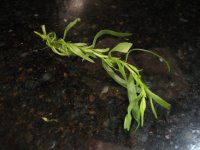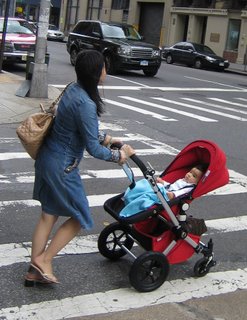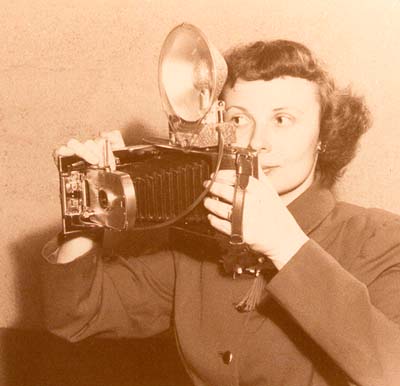Why cook? There isn't much need to in this town, home of
18,696 restaurants, many of which offer delivery to your door. It's instant gratification, it's indulgent, and best of all, it's often cheaper than buying the ingredients and slaving over a hot stove yourself.
Cooking is an activity that many consider quaint and vaguely self-sacrificing. But I assure you it is nothing of the kind. I cook because I am even more of a diva than those who rely solely on delivery. I can't stand pasta that isn't al dente. I won't eat Thai sauces that taste more like sugar than spice. And always, I want what I want when I want it, whether or not it is in my neighborhood and available for delivery. Thus, I learned to cook.
The Copycat Chef is a series that I will run at least once a month. In it, I attempt to recreate at home a particularly delicious dish I've had at a restaurant. It's kind of a game, and here are the rules:
1. The chef's recipe should be a secret one, not published in any of his or her cookbooks.
2. No one will tell me exactly what is in it.
3. It should be a signature recipe, very good, something you would crave when you think of that particular restaurant.

The mushroom risotto at Café Gray was an easy pick for this series. It is so good it made another reviewer actually
lick her bowl, and it might even be the answer to somebody's if-you-could-only-eat-one-thing-for-the rest-of-your-life question.
I studied several things at Café Gray to come up with the recipe:
 The Menu
The Menu. The menu does not give away much; it says only "Risotto with Mushroom Fricassée." But the word "fricassée" is a good clue. As
Julia Child explains in
Mastering the Art of French Cooking, "The fricassée is halfway between [a saute and a stew]. When chicken is fricasséed, the meat is always cooked first in butter--or butter and oil--until its flesh has swelled and stiffened, then the liquid is added." So Gray Kunz has playfully adapted this technique to mushrooms.
 Taste
Taste. The risotto was of excellent quality, obviously made with lots of butter, but cut by a hint of something tart - lemon? There were some interesting herbs mixed in. The mushroom sauce was harder to pin down. What gave it that level of complexity and darkness of color? It reminded me of an ingredient more prevalent in
Chinese cuisine: the liquid that dry mushrooms sit in when they are reconstituted, liquid which is often added to the main dish in cooking. I came back to the cafe again for a second tasting. Something about the mushroom sauce reminded me of French onion soup. Then it struck me: onion! And a dash of cognac.
Texture. As mentioned in the review, the risotto itself was not a glutinous mass, but a velouté mix the consistency of thick porridge. The mushroom sauce had the consistency of gravy, and the mushrooms themselves were still crunchy and slightly rubbery, as if they'd just barely been cooked. The reconstituted mushrooms were almost as plump as the fresh ones, which indicated that they had been soaking for quite a while.
 Appearance
Appearance. The mushrooms involved were hen o woods, and a couple others I couldn't identify at first. One was an
Alice-in-Wonderland toadstool-looking type. The dried were a mix of these and chanterelles, with the odd morel thrown in. Also, there was a sheen on top of the sauce, which meant - egad! - that not only had butter been used in the roux, more had been added to finish the sauce. The minced herb in the risotto looked to be tarragon.
Waiter Give-Aways. To elicit some clues from the waiter, I joked after devouring the whole dish of risotto that it was "non-fat, right?" He looked momentarily alarmed, as if I might be serious and about to sue, then realized I was kidding and said with a smile, "It's all butter and white wine." Interesting. I guessed there was a ton of butter - this is restaurant food, after all - but I didn't realize there was that much wine in it. White wine, not lemon, must provide the tartness to the risotto and the very French quality to the mushroom sauce.

I began the quest for Gray Kunz's mushroom risotto in earnest. There were key things to consider, namely, supplies. Good mushrooms are hard to find, especially a good variety of "wild" mushrooms. But they are in season now in France and Italy, thus 'tis the season for mushroom fricassée. I did some research on
eGullet (the wisdom of crowds definitely applies in NYC) and meandered down Avenue B. The place to which one poster refers on Avenue B just south of

Tompkins Square Park is
S.O.S. Chefs, which feels very secret and in-the-know, not just because they supply provisions for Per Se and Jean-Georges. The fresh mushrooms are kept in a refrigerated vault in back, and the very chic, knowledgeable proprietress takes you there and lets you inspect the wares. I chose some hen o woods and chanterelles, then picked up their "forest mix" of dried mushrooms, which proved to be a winner and the key to this dish.

After another trip to Cafe Gray, I realized I was still missing some types of mushrooms, namely oyster mushrooms, morels, and fried chicken mushrooms (the Alice-in-Wonderland toadstool-looking ones). I went to the Garden of Eden on 14th off Union Square, which also has an excellent selection, though they had no morels. The head of produce there was

forthcoming yet evasive. He had morels six weeks ago, he could have them again, or maybe not. Mushrooms and sellers of mushrooms work in mysterious ways, it seems. "There are fifty varieties of mushrooms," he said. "We can't stock them all." Good point.

The recipe itself is based on the best recipe for risotto I've encountered, Nigella Lawson's Lemon Risotto (
Nigella Bites), which is in turn based on Anna del Conte's recipe in
Secrets of an Italian Kitchen. Food is like fashion in this regard: no need to reinvent the wheel when you can just pull something out of the archives and put a new spin on it. The mushroom fricassée evolved from a hodgepodge of recipes from
Julia Child and
The Joy of Cooking.
Et voilà:
Risotto with Mushroom Fricassée From Café GrayTime: 2 hours 45 minutes. Active time: 45 minutes.
For the Fricassée:
1/2 cup dried mushrooms - a mix of chanterelles, morels, hen o woods, oyster
1 cup hot chicken broth, preferably organic
1 cup fresh mushrooms - hen o woods, oyster, fried chicken mushrooms, or whatever is flavorful, available and preferably French
2 tbsp flour
1/2 tsp salt
pinch white pepper
4 tbsp butter
1 tbsp olive oil
1/2 cup water
1/2 cup white wine - a dry Riesling or a floral Sauvignon Blanc
1/2 onion
1 bay leaf
2 sprigs fresh thyme
1 sprig parsley
dash of cognac
Pour the hot broth over the dried mushrooms and soak for at least two hours. You can soak them all day and finish the recipe in the evening if this is more convenient. Scoop out the mushrooms and carefully decant the soaking liquid into a saucepan, leaving the gritty residue of the mushrooms behind. Pick over the reconstituted mushrooms; separate out the tough bits and stems and discard. Prepare the fresh mushrooms: separate them into individual pieces, cutting stems as necessary.
Make a bouquet garni of the onion, bay leaf, thyme, and parsley. Add the water and wine to the mushroom liquid, pop in the bouquet garni, and bring to a boil. Cover and simmer over low heat.
Mix the flour, salt and pepper together in a small bowl. Heat 2 tbsp of the butter and the oil in a saucepan. Saute all the mushrooms, the reconstituted dried ones and the fresh ones, over medium-high heat for a minute. Sprinkle the flour mixture over all, saute for a minute more until the flour melds with the butter and oil, then pour in the mushroom broth, transferring the bouquet garni as you go. Bring it to a boil, then simmer on the lowest temperature, covered, for 10 minutes. The mushrooms should be crunchy, so don't overcook them. As with any fricassée, you can turn off the heat and reheat the sauce without any negative consequences.
For the risotto:
2 shallots
1 rib celery
1 tbsp olive oil
4 tbsp butter
2/3 cup arborio rice
1 quart chicken stock, preferably organic
1/4 cup grated Parmesan
1 egg yolk
2 tbsp white wine
1/4 cup half & half
salt and white pepper to taste
2 tbsp finely chopped tarragon
Bring the chicken broth to a boil, then cover and reduce to a low simmer.
Chop the shallot and celery to a pulp in a food processor. Heat 2 tbsp of the butter and the olive oil and saute the shallot mixture over medium-low heat for a few minutes, until softened. Add the rice and stir until thoroughly coated with the oil, about 1 minute. Add a ladleful of the broth and stir once. Wait until the rice settles to the bottom and the broth bubbles on top before you stir again. Stir several times and let it settle. Repeat until almost all the broth has been absorbed, then add another ladleful. Don't forget to salt the risotto to taste as you go.
It's a myth that you have to stir risotto "constantly." You can't really leave the room while you're making it, but you don't want to bother it too much, either. Stirring releases the glutens on the rice's surface and makes the mixture stickier. With the Café Gray risotto, you are aiming for a suspension of rice in thick liquid, not a gummy mass of rice. Don't overagitate it.
The stove is at the right medium-low temperature when it takes about a minute for a new ladleful of broth to start bubbling quickly at the surface.
When the rice is almost done: If, as you reach the end, you start running out of broth, dilute the remaining broth with hot water and forge ahead.
Whisk the Parmesan, egg yolk, half & half, and white wine together in a small bowl.
Finish the fricassée: Reheat the mushroom mixture and stir in the remaining 2 tbsp butter and a dash of cognac. Salt and pepper to taste.
When the rice is just al dente, the risotto is done. There should be about half a ladleful of liquid remaining with the rice, so that it is the consistency of porridge. Turn off the heat, then stir in the eggy mixture and the remaining 2 tbsp of butter. Salt and pepper to taste. Stir in the chopped tarragon.
Serve absolutely immediately. Pour the risotto into a bowl and the mushroom fricassée into a miniature silver tureen with a jaunty man on top, if you have it. If not, a ceramic dish will do.
Serves 2.

 We already heard the city wants to ban the use of trans fats in cooking - not to be outdone by the food fascism capital of the U.S.A., Chicago - but this may be going a little too far. According to Clyde Haberman in this morning's New York Times, the Bloomberg administration wants to implement a series of regulations that would control everything from the maximum thickness of a steak to the number of glasses of wine each diner is allowed with their meal. Other highlights: mandatory goggles for customers at sushi bars, in-depth examination of the Heimlich maneuver poster before seating, and decaf coffee only after 10 p.m. Worse, diners would be forced to eat whole wheat pasta.
We already heard the city wants to ban the use of trans fats in cooking - not to be outdone by the food fascism capital of the U.S.A., Chicago - but this may be going a little too far. According to Clyde Haberman in this morning's New York Times, the Bloomberg administration wants to implement a series of regulations that would control everything from the maximum thickness of a steak to the number of glasses of wine each diner is allowed with their meal. Other highlights: mandatory goggles for customers at sushi bars, in-depth examination of the Heimlich maneuver poster before seating, and decaf coffee only after 10 p.m. Worse, diners would be forced to eat whole wheat pasta.  Whew - where did that come from? Channeling a Philip Roth character there. Anyway, I really look forward to the passage of these new regulations. Restricting people's personal choices about how they live their lives has always worked well in America, the country that never listens to anyone, no matter how right they may be. After all, it worked with foie gras in Chicago, right?
Whew - where did that come from? Channeling a Philip Roth character there. Anyway, I really look forward to the passage of these new regulations. Restricting people's personal choices about how they live their lives has always worked well in America, the country that never listens to anyone, no matter how right they may be. After all, it worked with foie gras in Chicago, right?

















































